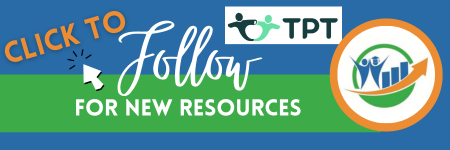Top Tips for Teaching Text Structure to Middle School Students
- Dianne McKinley
- Sep 2, 2024
- 3 min read
Updated: Aug 22
Understanding text structure is essential for middle school students as it helps them comprehend and analyze the content they read. It is particularly important because in middle school students are reading more content-specific text than in elementary school. It is important that students understand that text structure supports understanding in different disciplines and some disciplines are more likely to include certain types of text structures. For example, chronological order is used frequently in history courses to present the order or timeline of events in history. Here are some top tips to effectively teach text structure to your students.

1. Introduce Different Types of Text Structures
Begin by explaining the various text structures commonly found in texts, such as:
Chronological/Sequential: Events are presented in the order they occurred.
Cause and Effect: Shows the relationship between events or actions and their outcomes.
Compare and Contrast: Highlights similarities and differences between two or more subjects.
Problem and Solution: Identifies a problem and proposes one or more solutions.
Description: Provides detailed information about a topic.
2. Use Graphic Organizers

Graphic organizers such as Venn diagrams, flow charts, and story maps can help students visually organize information according to different text structures. These tools make it easier for students to understand and remember the structure of the text.
3. Incorporate Real-Life Examples
Use examples from texts that students are already reading in class or from popular media. Show them how different structures are used in news articles, stories, and even advertisements. This makes the lesson more relevant and engaging.
4. Teach Signal Words
Help students identify signal words that indicate a particular text structure. For example:
Chronological/Sequential: first, next, then, finally
Cause and Effect: because, therefore, as a result
Compare and Contrast: similarly, however, on the other hand
Problem and Solution: problem, solution, resolve, fix
Description: for example, such as, characteristics
5. Practice with Writing Activities
Encourage students to write their own texts using different structures. Assign projects where they can create timelines, compare and contrast essays, cause and effect charts, or descriptive paragraphs. Writing helps reinforce their understanding of how to organize information. When students are writing, prompt them to think about the structure as they draft. Encourage them to consider which text structure best suits the message of their writing.
6. Discuss the Purpose of Each Structure
Help students understand why authors choose certain structures for their texts. Discuss how the structure supports the purpose and message of the text. For example, a chronological structure is effective for telling a story, while a problem and solution structure works well for persuasive writing.
7. Use Mentor Texts
Select mentor texts that clearly exemplify each text structure. Read these texts with your students and analyze the structure together. Mentor texts provide strong examples and set a standard for students' own writing.
By incorporating these tips into your teaching, you can help your middle school students become more proficient readers and writers who are able to engage in thoughtful learning and reflection while reading and writing.
Conclusion
In conclusion, teaching text structure is a fundamental skill that empowers middle school students to better comprehend and engage with the diverse content they encounter across subjects. By introducing various text structures, utilizing graphic organizers, incorporating real-life examples, and guiding students through writing activities, educators can significantly enhance their students’ reading and writing abilities. Understanding text structure not only helps students organize information more effectively but also deepens their critical thinking and analytical skills, setting a strong foundation for academic success. As you implement these strategies in your classroom, remember that consistent practice and thoughtful discussions about the purpose of each structure will further reinforce your students’ understanding and application of these essential literacy skills.
Looking for support to implement this learning? Contact us today.
Download this FREE Toolkit:
Support Productive Struggle in Reading: https://www.incompassinged.com/productive-struggle
A downloadable guide to recognizing student signals and knowing exactly how to respond.




